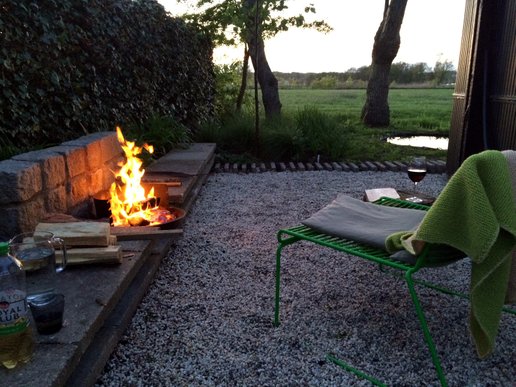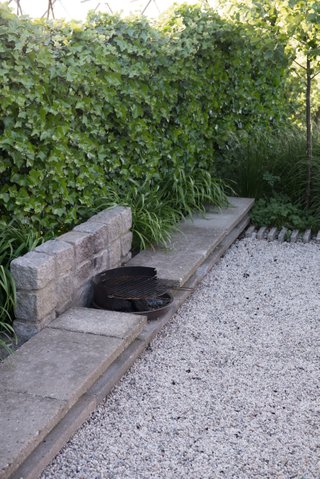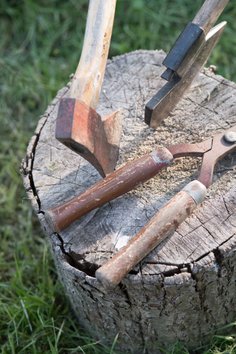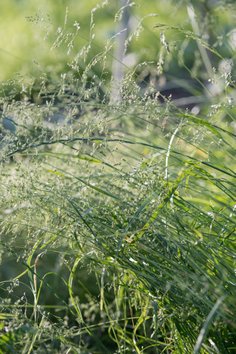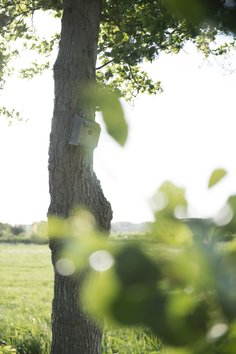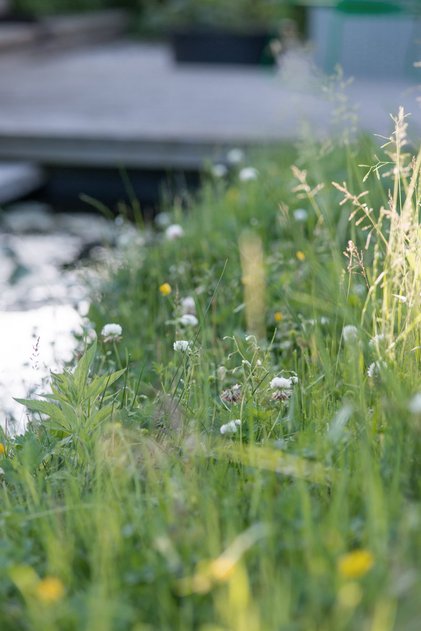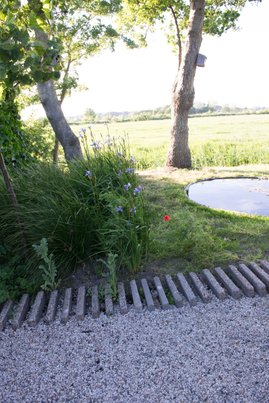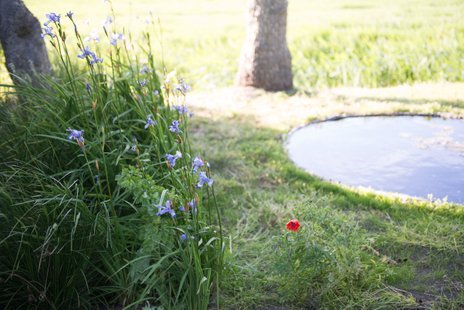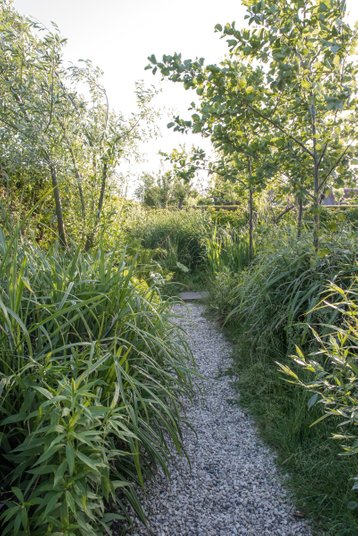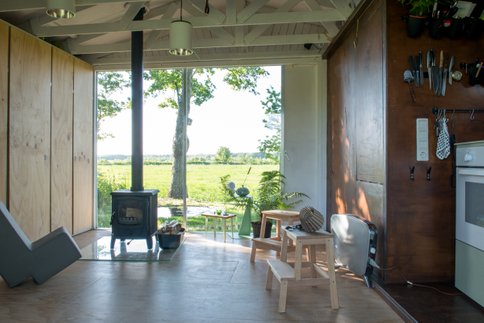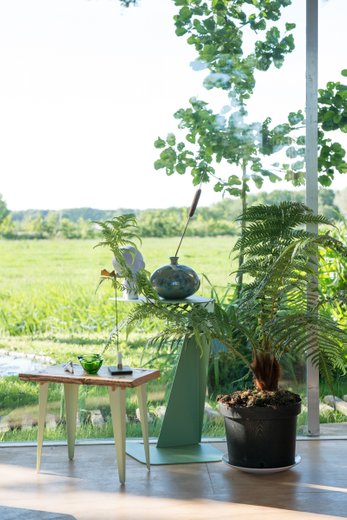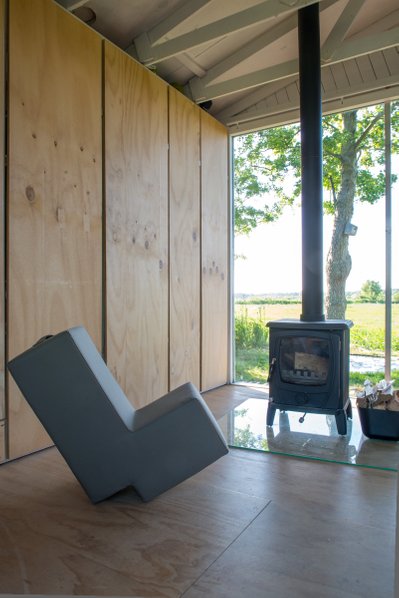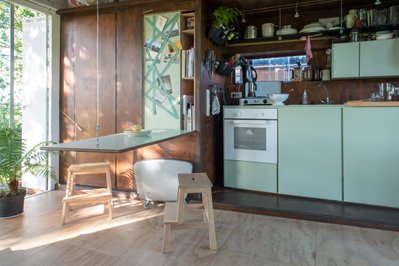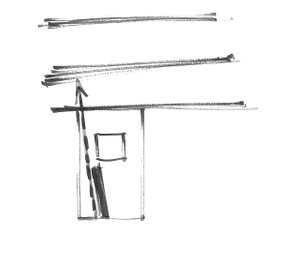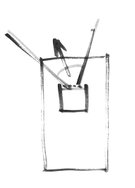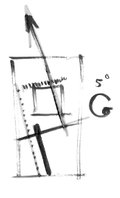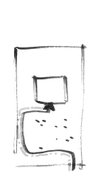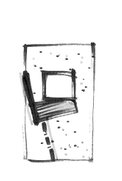Cabin in the fields
Garden and small pavilion behind the Dunes in The Netherlands
People tend to over-domesticate their garden in an attempt to control it by detaching it from the surrounding landscape by planting exotic plants, fencing, and a maintained shortcut lawn. Unfortunately, with this kind of attitude, the fight against nature begins. Weeds begin popping up everywhere; bugs eat the plants, and a shortage of nutrients shows in the plants and lawn. The result is a lot of frustration and increased use of pesticides, herbicides and fertilizer.
I wanted to experiment with a different design approach in my garden, not only because I don’t like tightly maintained gardens but because I believe we have to embrace a different approach towards gardens.
Pic. A
By embracing the garden as a living entity connected to the larger ecosystem, we open ourselves to the spontaneity and wonderment of nature.
By giving up some control and maintenance, we can get to know the plants that grow in our garden, build a relationship with the garden and therefore restore our connection with nature.
This small garden behind the Dutch dunes of Wassenaar is part of a bigger complex of allotment gardens. The complex is situated near the river stream of the Old Rhine. It is a wet landscape with mainly rich clay soil. You could say it is a typical Dutch polder landscape with meadows and straight ditches, Willows, Alders, grass meadows and water-edge plants. This landscape is the starting point for the design of this garden.
I wanted this garden to be a part of the surrounding landscape rather than part of the complex of 45 small plots.
After buying the property, I first plowed the whole garden. Within a few weeks, Irises and Alders were popping up. I saved these plants by making a small nursery to use later in the design. After that, I renovated the cabin. The most significant change was opening the west facade and framing the view toward the sunset and the dunes behind the fields. I did not do anything for a year afterwards to get a feel for the place and let the design grow.
Photography:
Maike de Ridder
Pic. A, B, C and D by Andrew van Egmond
Publicity:
Home & Garden | April 2017
Pic. B
As said, the landscape is the starting point. I wanted to let the surrounding field be part of the garden, or even better; I wanted the garden to be part of the surrounding fields. I did this by incorporating the long lines made by the ditches into the garden. See figure 2. I designed one long pond, a long slim line that guides the path and steers the view of the visitor approaching the cabin to the open view over the fields. And, of course, I used plants that represent the surrounding landscape. The Irises and the Alders in the nursery I had created were planted in the right place, different seed mixes were sown, and perennials and ornamental grasses were planted. As a result, a solid and resilient native base was formed for the garden.
I love the contrast between lush, wild vegetation and minimalistic, contemporary, clear architecture, and I wanted to incorporate that concept in this garden.
This is realized by creating one connected composition of lines and surfaces that float above the green carpet of vegetation. Figures 6 and 7 show this in a hand sketch.
This composition is subtly rotated by just a few degrees, shifting the orientation slightly and steering the view toward the deepest point in the neighbouring landscape, towards where the sun sets behind the dunes on late summer evenings.
This rotation of the design is also continued in the interior of the cabin. It is incorporated into the design of the kitchen and shower unit. The visitor does not always see this subtle rotation as it is mainly experienced subconsciously.
It also makes the garden visually bigger.
Most of the original materials from the old existing garden have been reused in the new design. For example, the concrete tiles and the giant granite cobblestones were part of the old garden. By using these, a new layer is added to the design. The old stones and slabs are aged beautifully and naturally blend into the landscape.
This garden has evolved into a small paradise that connects to the landscape seamlessly and is full of surprises. It strengthens the local ecosystem and enriches biodiversity while not requiring much maintenance. The grass is cut 3 to 5 times in a growing season, and the hedges and perennial grasses are cut yearly. I am even thinking of not cutting the perennial grasses anymore, as in nature, to see what the result will be.
It’s all about giving into the rhythm of nature and approaching maintenance as an orchestrated exercise.
Long lines in the surrounding landscape are incorporated in the garden. So the garden is one with the landscape instead of being alienated from it.
At the same time the long lines are sight lines on the landscape with the trees and cabin framing the view.
Catching the beautiful view of the fields by opening up the cabin from inside. One wall becomes one big window connecting the inside of the cabin with the landscape.
Just rotating the composition of lines by 5 degrees changes the perception and steers the view a bit more to the view on the dunes behind the fields.
The approach to the entrance defines a big part of the experience.
Not choosing the functional but the emotional approach enriches the whole experience.
One connected architectonic object floating in a spontaneous wild, native vegetation.
Pic. C
Pic. D















